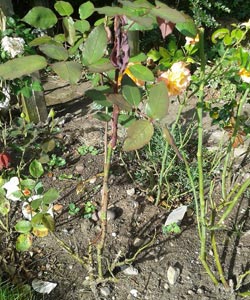- Flowers
Flower Bulbs Allium Bulbs Anemones Begonia Tubers Crocus Bulbs Daffodil Bulbs Dahlia Tubers Hyacinth Bulbs Lily Bulbs Tulip Bulbs Woodland Flower Bulbs Other Flower BulbsFlower Plants Annual Bedding Plants Children's Flower Plants Clematis Climbing Plants Cottage Garden Plants Exotic Plants Flowers For Cutting Plants Foliage Plants Greenhouse & Indoor Plants Ground Cover Plants Hanging Basket Plants Lavender PlantsHardy Geraniums Herbaceous Border Plants Heuchera Pansies and Violas Patio Plants Water Plants Window Box Plants Winter Bedding Plants Hydrangea Large impact plants Recommended By Our Experts
- Fruit & Vegetables
- Trees, Shrubs & Ornamentals
- House Plants
- Tool Shed
Garden Tools & Equipment Barrows and Trolleys Garden Solutions Harvesting Plant Supports Seed Sowing Tree Stakes Water Butts Weed Control Hand Tools Secateurs, Snips and Pruners WorkshopGarden Irrigation & Watering Irrigation Kits Water Butts Hoses & Sprays Miscellaneous Fertilisers Plant Pots Hanging Baskets Plant Protection Garden Compost All Compost
- Outdoor Living
Garden Living Barbecues & Firepits Garden Storage Solar Lights & Lighting Fixtures & Ornaments Awnings Sail Shades Garden Clocks Landscaping Lawn Edging PavingPatio Heaters Gas Patio Heaters Electric Patio Heaters Fire Pits, Chimeneas, Fire Baskets Wallmounted/Ceiling Patio Heaters Freestanding/Table Top Patio Heaters Water Features Solar Powered Water Features Mains Powered Water Features Indoor Water Features Outdoor Water FeaturesGarden Furniture Rattan Furniture Parasols Garden Benches Dining Sets Loungers Wooden Furniture Party Tents & Gazebos
- Wild Birds
- Gardening Info
- Special Offers
Join Our Gardening ClubVan Meuwen Gardening Club
Become a Member
Join our Gardening Club to unlock exciting perks and discounts!
JUST £10 for one year's membership
10% OFF EVERY order placed online £20 worth of Van Meuwen Vouchers Exclusive members only deals Join Now
Facebook Questions and Answers for the 15th August 2014

Click here to see our previous Q&A sessions.
Hello Facebook fans, thanks for your questions this week, here are Carly's replies:
Eric Bray
Can hardy perennial wallflowers be cut back; mine are starting to take over!
Hi Eric, yes they can! They are best cut back just after flowering to keep the plants bushy and prolong their life (they can be short lived). Cut away all the spent flowers and lightly trim the foliage, taking care not to prune too hard as they won't recover from this. I hope this helps.
Anna Shepherd
When is the best time to lift and replant my tree lily bulbs? They have finished flowering and I would like to move them to a different area.
Hi Anna, the best time to lift tree lily bulbs is in the autumn after the leaves have yellowed. This gives the plants time to build up the bulb for next year's flowering display. You could also try growing your lilies in pots, which can be plunged into the border and taken away once flowering has finished. Take a look at our 'How to grow lilies' article for more information. I hope this helps.
Kate Rose
Carly what do you think is wrong with my roses? Is it a bad year for them? I've fed, watered and sprayed them, and they get plenty of sun, but they've gone very spindly and the buds at the top are drooping. The soil is very light so even though I watered in the hot spell and it's now rained, could it still be drought? Thanks.

Hi Kate, it sounds like your roses may be slightly unhappy with their growing environment. We've had quite a good summer so far (my roses seem to have enjoyed it!). The leaves of your plants look healthy which is a good sign. Roses do like a rich, fertile soil and for this reason often thrive in clay soils, needing a little more TLC in sandy soils. It's always best to work in lots of well-rotted manure prior to planting and then applying a thick mulch of well-rotted manure or compost each spring to help the soil retain moisture and keep it in good shape. If the soil is too dry, compacted or water-logged roses will struggle and this can cause wilting and dieback (especially if newly planted this year). These conditions will also make them more susceptible to rose canker and other diseases. It might also be worth checking the plants carefully for any insect pests such as scale insects or aphids in case they are a problem. Also make sure the graft union sits at soil level rather than below, as this can cause rose dieback. If you need to re-plant your roses, do it when the plants have become dormant in late autumn and winter. I hope this helps give you some ideas Kate, best of luck.
Julie Goodwin
Hi, we went fruit picking this weekend and picked some huge beetroot there which looked like they were growing in pure sand. The whole place is on sandy soil. We are on clay and have no luck with root crops such as carrots, beets or parsnips. Is there a way to combat our soil or are containers the way forward for great looking, large beetroots? And how about nutrition for them in the sand?
Hi Julie, although carrots and parsnips can be difficult to grow in clay soil, generally beetroot is a bit easier because the 'bulb' forms at the soil surface. They do still prefer a light soil for root growth however so it is worth improving your soil each year. Digging in lots of organic matter such as well-rotted manure is the best way forward â it breaks the clay up into separate crumbs allowing air into the soil and a better environment for root growth. You can also buy clay improvers which contain gypsum to help break up the soil. Take care not to use these if your soil is alkaline as they will increase the pH further. You could consider putting in raised beds filled with good quality top soil and compost so the plants still have access to the clay underneath but a more ideal soil on top to root into. You can also grow beetroot in large containers if preferred. Cultivation is the same as it would be for growing in the ground, but make sure you liquid feed every week or two with a high-potash fertiliser for the best growth. The beetroot you saw growing in sand may have had access to nutrients and organic matter lower down in the soil and/or some slow-release fertiliser may have been added prior to planting. Gardeners who grow carrots for vegetable shows grow them in pure sand and add fertiliser to sustain growth.
Also, can you suggest some striking summer plants for a bed which is riddled with roots from a sycamore tree? It's not in shade; in fact it's in full sun, so is always dry and dusty. I think it needs lots of muck in but I don't want to encourage more roots. Many thanks.
My garden also has a sycamore tree and the only way to cultivate the bed is to dig it over from time to time, remove the tree roots and work in lots of organic matter (unfortunately the roots grow back regardless of soil fertility). As you've said the tree roots leave the soil impoverished and dry so the only way other plants will thrive is if you provide nutrients and moisture through the addition of organic matter. For summer colour I would look to drought tolerant plants such as Californian poppies, Gazanias, Verbena, Achillea, Anthemis, poppies, perennial wallflowers and Red hot pokers. Have a look at our 'Drought tolerant plants' article for some more ideas. I hope this helps Julie, best of luck!
Sign up to the Van Meuwen Gardener's Club for Special Offers
Delivery Information Privacy Policy Cookies Terms of Business Affiliate Programme Planting & Cultural Advice Contact Us© 2024 Van Meuwen. All rights reserved. A division of Branded Garden Products Limited.
- House Plants
